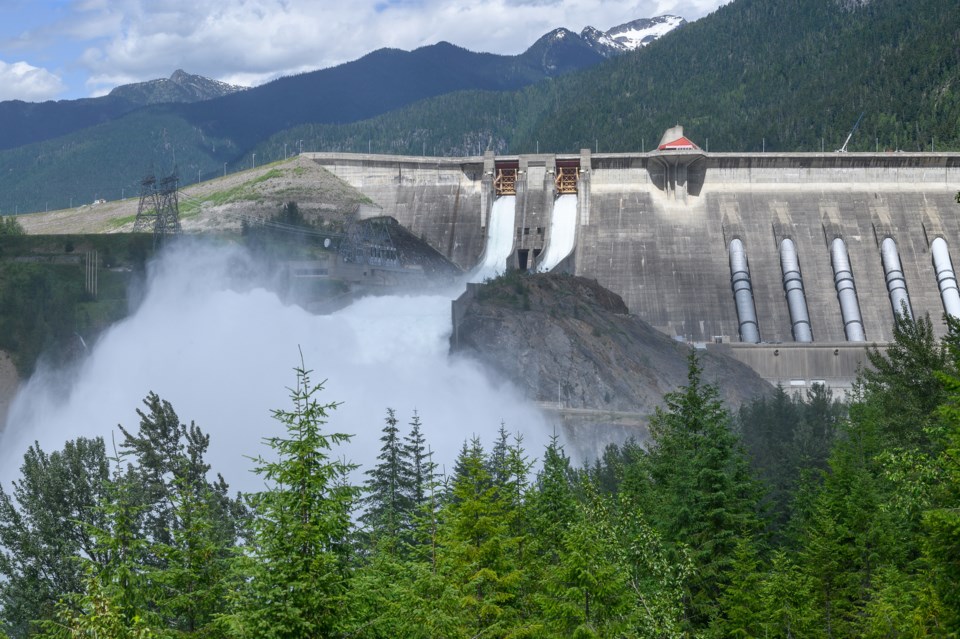Speculation on the capabilities of a high-altitude Chinese spy balloon that recently flew across North American airspace has largely focused on critical infrastructure and military sites in the United States.
However, the balloon is reported by Canadian officials to have spent the span of two days traversing British Columbia, prompting the question on whether it’s potential capabilities could be employed above this province.
Glacier Media asked three national security experts about B.C. implications for such spying devices. They suggest the most obvious implication of a spy balloon is that it is likely to be capable of intercepting and interfering with military communications from B.C. bases.
“The intent of the balloons is what has analysts wondering. It could be as simple as intelligence collection or it could be part of a larger strategy,” said Scott McGregor, a military intelligence and foreign espionage analyst based in Vancouver.
“I think what it collects is electronic information; it’s that simple,” said David Bercuson, program director of the Canadian Defence and Foreign Affairs Institute in Calgary.
“Signals intelligence from us, radio broadcasts, communications, learning how the NORAD network works, maybe all kinds of microwave signals and so on,” said Bercuson.
“Signals intelligence is extremely important as a means of gathering information. We do it, they do it, everybody does it,” added Bercuson.
McGregor says it is possible for China to use balloons as an alternative means to communicate with what he calls “ground assets.”
Assets could presently be spy agents or, in the event of a war, Chinese naval ships and submarines off the B.C. coast, said McGregor.
University of B.C. international relations expert Allen Sens said, via email, “there could conceivably be interest in Canadian defence installations at Comox and Esquimalt, but the main points of interest nearby would be the United States navy facilities in Washington State and ballistic missile radar in Oregon, and then, of course, the larger U.S. defence infrastructure in Alaska and the continental United States.”
There also remains the unknown factors of what sort of payload a balloon could carry.
“The fear is that a payload with biological or chemical agents or electromagnetic pulses could be deployed,” said McGregor.
Canadian officials noted Monday at a news conference that recovery efforts on three unknown flying objects shot down in Yukon and Lake Huron are being conducted by personnel in hazmat gear; however, this is only a safety precaution, they noted, and Sens said such a precaution is standard.
While technically feasible, such an attack is unlikely to be done by a balloon, asserted Sens.
B.C. is also home to hydroelectric power generation that supplies electricity to the western U.S. and electromagnetic pulses could bring down the grid, in theory.
However, in such a situation, Sens and Bercuson note there are more practical ways to attack the electrical grid.
“China (or any other country) is highly unlikely to engage in this kind of open, direct aggression involving kinetic (physical) attacks on infrastructure in any situation short of a war. And if a war does break out, there are many other ways of conducting such attacks quickly and with greater chances of success,” said Sens.
“In broader context, the threat of China embarking on a balloon campaign intended to disable Canadian energy infrastructure at this moment in time is exceedingly low,” said Sens.
But McGregor says the balloon moved with purpose and not like a weather balloon, as the Chinese government suggested it was. Since it tracked across B.C.’s Interior for an extended period of time, McGregor hypothesizes that it wasn’t taking a break from intelligence gathering, if that is what it was doing.
“BC Hydro sites have national security implications, for sure,” said McGregor.
Bercuson said while the balloons could present China with an alternative means of a cyberattack, the Chinese have a well-established ground game, with digital communications.
“The worry on the part of the intelligence people is what the big balloon got and what it sent back to China and all the rest of that stuff, but it’s just a blip in the ocean. I mean, they're listening to everything. …For all I know, they're listening to everything that anybody says on a Huawei phone,” he said.
McGregor takes the position Canada ought to be much more aware of these aerial threats as “China is at war with the West,” just not in the common meaning of the term.
“We are under 24/7 cyberattacks on our B.C. government agencies and corporations,” he said, adding the People’s Liberation Army has divisions of cyberhackers well known to national defence officials.
In July 2021, the Canadian government denounced “the unprecedented and indiscriminate exploitation of Microsoft exchange servers” in Canada by the People’s Republic of China.
McGregor said the balloon has exposed a weakness in NORAD defences, something Bercuson says needs to be addressed.
“The radar systems are fairly sensitive; they need to be updated. I would suspect that they're tuning their radars a little differently, to pick up objects that they wouldn't have picked up before,” said Bercuson.
And if spy balloons become the norm and not the exception, Bercuson says B.C. will be at the forefront of such encounters: "If these are coming in from the Pacific, between Alaska, B.C. and the American mainland, the chances are about one in every three would come in over British Columbia."




